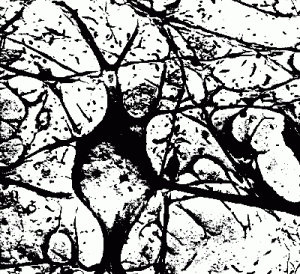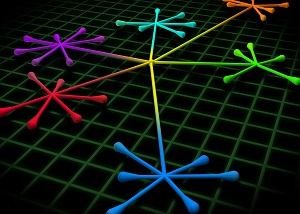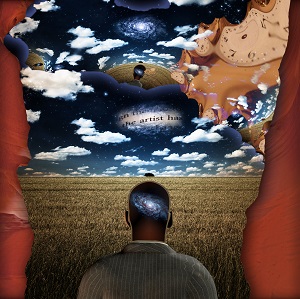04 Mar Gnosticism, Mysticism and Hard Knowledge
 Neural Network science describes oft rejected explicit knowledge in neurons as “gnostic cells” or “gramma cells” suggesting one neuron knows about gramma. Not all scientists agree with associationist theories that explain learning in the context of things that pre-exist in memory. In fact, an entire school of thought flatly rejects explicit representations that form the core of associationist theories.
Neural Network science describes oft rejected explicit knowledge in neurons as “gnostic cells” or “gramma cells” suggesting one neuron knows about gramma. Not all scientists agree with associationist theories that explain learning in the context of things that pre-exist in memory. In fact, an entire school of thought flatly rejects explicit representations that form the core of associationist theories.
One of the early expressions of this viewpoint was articulated by James in Principles of Psychology (1890): “The elementary properties of nerve-tissue on which the brain functions depend are far from being satisfactorily made out. The scheme that suggests itself in the first instance to the mind, because it is so obvious, is certainly false: I mean the notion that each cell stands for an idea or part of an idea, and that the ideas are associated or ‘bound into bundles’ (to use a phrase of Locke’s) by the fibers. If we make a symbolic diagram on a blackboard, of the laws of association between ideas, we are inevitably led to draw circles, or closed figures of some kind, and to connect them by lines. When we hear that the nerve-centers contain cells which send off fibers, we say that Nature has realized our diagram for us, and that the mechanical substratum of thought is plain. In some way, it is true, our diagram must be realized in the brain; but surely in no such visible and palpable way as we first suppose” (Chapter 3).
| Understanding Context Cross-Reference |
|---|
| Click on these Links to other posts and glossary/bibliography references |
|
|
|
| Prior Post | Next Post |
| Images in Thinking | Decide on Fuzzy Logic |
| Definitions | References |
| cognitive phenomena | James 1890 (Stanford) |
| explicit knowledge | Locke 1689 (Stanford) |
| stimulus activation | Descartes Posthumus |
| intuitively meaningful | Immanuel Kant (Stanford) |
William James is often regarded as the father of American psychology. In fact, he coined the term psychology and created the world’s first psychology department, at Harvard University. He also flatly rejected associationist theories. Since many modern theories are built on his assumptions/propositions, it is important for us to examine them to see if they are still credible in the light of intervening discoveries about how the brain works.
Why Not?
 Why was James so convinced that associationism is wrong? Here are his four major physical arguments against associationism:
Why was James so convinced that associationism is wrong? Here are his four major physical arguments against associationism:
- Many cells in the brain have no fibrous appendages.
- The fibers of the neurons are untraceable; therefore, no real pattern of connections can be devised to model the storage of concepts in the brain.
- We do not see a “simple coarse anatomical connection, like a line on the blackboard, between two cells”.
- This gnosticism is so obvious it must be false.
The first argument, presumably referring to glial cells, has been overtaken by science. We now know that most brain cells do have fibrous appendages, often very many. The second and third arguments lack substance in that difficulty in connecting the dots does not mean there is no underlying picture. The absence of joints between fibers of one cell and another cell or its fibers does not mean they are unconnected; as we now know, stimuli or activation can be transmitted over “void.” James’ last argument is that Nature or God should be treated as mystically malevolent for attempting to deceive us with the obvious – an argument that demands (and deserves) no rebuttal.
My kids and I enjoy the movie: The Princess Bride. In it, the Dread Pirate Robert’s Sicilian nemesis is certain that the obvious is inconceivable, leading to his ultimate downfall. Let us not reject the obvious, except on solid scientific grounds. We should also avoid assuming the obvious to be true. There is still precious little understanding of many everyday human phenomena, including the “placebo effect” in which, apparently, mind triumphs over matter. I will attempt to confine my theorizing to research-based ideas and neither reject nor cling to the “obvious” without supporting data.
Patterns and Things
One main thrust of James’ argument is that “it is THINGS, not ideas, which are associated in the mind” (1890). If we replace the word THINGS with PATTERNS, we have a notion closer to Aristotelian associationism and identical to the theory I propose. The “IDEAS” proposed by Locke that James opposed were probably a lexical attempt to lump things concrete and abstract into a single word to reduce sentence length. Of course, the “arbiter” or censor of thought streams, as proposed by Locke and others, may have been the primary reason for James’ opposition. As James was no stranger to the occasional intrusion of inappropriate thoughts, which, in fact, arose due to some real connections between THINGS, he had no choice but to reject the association of IDEAS with a Victorian arbiter. Locke’s arbiter has both spiritual and cognitive components. Human reason, Locke suggests, is the ultimate arbiter of thought, decision and action. Using it, we either discover the associations through which the validity of a proposition can be established with certainty, or it plays the most crucial role in establishing the legitimacy of a divine revelation (Essay IV xix 12-16).
 Though James was justified in opposing the mystical arbiter on scientific grounds, his argument against IDEAS was more semantic than substantive. He actually accepts the basic model of lines connecting circles, as he states immediately after his introduction to Chapter 3 and elsewhere, while he redefines the content of the circles and the nature of the relational lines. Describing cognitive phenomena in terms of patterns is very convenient from the perspective of cybernetics. Pattern matching is one of the most basic computational mechanisms for dealing with input and producing useful output. In addition to being convenient, patterns are also intuitively meaningful. We can replace the word “patterns” with the word “knowledge”. In the model we are describing in Understanding Context, all knowledge is stored in the brain as patterns that live in contexts. In Section 5, Fuzzy Logic, we will talk about the nature of knowledge and return to James for a look at his ideas on existential or hierarchical knowledge.
Though James was justified in opposing the mystical arbiter on scientific grounds, his argument against IDEAS was more semantic than substantive. He actually accepts the basic model of lines connecting circles, as he states immediately after his introduction to Chapter 3 and elsewhere, while he redefines the content of the circles and the nature of the relational lines. Describing cognitive phenomena in terms of patterns is very convenient from the perspective of cybernetics. Pattern matching is one of the most basic computational mechanisms for dealing with input and producing useful output. In addition to being convenient, patterns are also intuitively meaningful. We can replace the word “patterns” with the word “knowledge”. In the model we are describing in Understanding Context, all knowledge is stored in the brain as patterns that live in contexts. In Section 5, Fuzzy Logic, we will talk about the nature of knowledge and return to James for a look at his ideas on existential or hierarchical knowledge.
Experience as Tutor
Another recurring theme in James’ objections to associationist theory is the emphasis on “Experience,” a passive kind of sensory perception in which people learn from whatever they encounter. Instead of being unwitting learners driven by circumstances, James espouses a more active role for the learner in which self-consciousness, attention, discrimination and active cognitive processes are crucial aspects of learning. James defines learning as a voluntary activity (with some involuntary components) in which we, by selecting which stimuli to attend to, shape the conceptual foundation of our knowledge. He describes a learning pattern in which “each of us literally chooses, by his ways of attending to things, what sort of a universe he shall appear to himself to inhabit” (1890, Chapter 11). Attention enables us to build a contextual framework with expectations that help us –
- perceive
- conceive
- distinguish
- remember –
better than we could without a set of expectations. James defines distinguishing in much the same terms used by the associationists: “Clearness, so far as attention produces it, means distinction from other things and internal analysis or subdivision. These are essentially products of intellectual discrimination, involving comparison, memory and perception of various relations” (1890, Chapter 11).
Abstract Conceptualization
In comprehending an abstract concept as opposed to a concrete one, Aristotle says, “It must be apprehended, therefore, by a different power or by the same power in a different state. To sum up, in so far as the realities it knows are capable of being separated from their matter, so it is also with the powers of the mind” (On The Soul, Book III, Chapter 4).
 This points out the symbolic processing capability of the mind. You are clearly capable of fitting the universe inside your head, and pinpointing your place in it to an arbitrary level of abstract complexity. CONTEXT! This theory of abstraction is later elaborated by Aristotle’s statement that “it is thus that the mind when it is thinking the objects of Mathematics thinks as separate elements which do not exist separately. In every case the mind which is actively thinking is the object which it thinks” (ibid, Chapter 7). Associations, in the Aristotelian sense, are context dependent. “But that which the mind thinks and the time in which it thinks are in this case divisible only incidentally and not as such. For in them too there is something indivisible (though, it may be, not insolvable) which gives unity to the time and the whole of length; and this is found equally in every continuum whether temporal or spatial” (ibid, Chapter 6). A model of cognition that does not contain a mechanism for maintaining this continuum of context falls short of human thinking abilities.
This points out the symbolic processing capability of the mind. You are clearly capable of fitting the universe inside your head, and pinpointing your place in it to an arbitrary level of abstract complexity. CONTEXT! This theory of abstraction is later elaborated by Aristotle’s statement that “it is thus that the mind when it is thinking the objects of Mathematics thinks as separate elements which do not exist separately. In every case the mind which is actively thinking is the object which it thinks” (ibid, Chapter 7). Associations, in the Aristotelian sense, are context dependent. “But that which the mind thinks and the time in which it thinks are in this case divisible only incidentally and not as such. For in them too there is something indivisible (though, it may be, not insolvable) which gives unity to the time and the whole of length; and this is found equally in every continuum whether temporal or spatial” (ibid, Chapter 6). A model of cognition that does not contain a mechanism for maintaining this continuum of context falls short of human thinking abilities.
| Click below to look in each Understanding Context section |
|---|








